Baby’s Breath Spirea, also known as Breath of Spring Spirea, Thunberg’s Meadowsweet, or Thunberg Spirea, is a perennial shrub from the Rosaceae family. Native to Japan and China, this elegant deciduous plant thrives in hardiness zones 4 through 8 and is highly valued for its delicate, cascading white flowers.
This species, scientifically identified as Spiraea thunbergii, naturally grows on hillsides and flourishes in full sunlight. Its graceful growth habit and ability to adapt to a range of conditions make it a favorite for ornamental gardens.
Whether planted as a standalone feature or incorporated into mixed borders, Baby’s Breath Spirea offers a touch of timeless beauty to any landscape.
| Common name | Baby’s Breath Spiraea, Breath of Spring Spiraea, Thunberg’s Meadowsweet, Thunberg Spiraea |
| Botanical name | Spiraea thunbergii |
| Family | Rosaceae |
| Species | thunbergii |
| Origin | Japan and China |
| Life cycle | Perennial |
| Plant type | Shrub |
| Hardiness zone | 4, 5, 6, 7, 8 |
| Sunlight | Full Sun |
| Maintenance | Low |
| Soil condition | Clay |
| Drainage | Well-Drained |
| Growth rate | Medium |
| Flowering period | Spring |
| Height | 3 ft. – 5 ft. |
| Flower color | White |
| Leaf color | Gold, Yellow |
| Fruit color | Brown, Copper |
| Stem color | Brown, Copper |
| Fruit type | Follicle |
| Leaf benefit | Long-lasting |
| Flower benefit | Fragrant |
| Uses | Slope/Bank |
I. Appearance and Characteristics
Spiraea thunbergii (珍珠绣线菊), Thunberg spiraea or Thunberg’s meadowsweet, is a species of flowering plant in the rose family, native to East China and Japan, and widely cultivated elsewhere.
Other common names include baby’s breath spirea. The Japanese common name is yuki-yanagi.
This is one of several plants whose Latin specific epithet thunbergii honours the Swedish botanist and plant collector Carl Peter Thunberg (1743-1828).
Growing to 1.5 m (4.9 ft) tall and broad, Spiraea thunbergii is a small, long-lived shrub with thin, flexible stems. The flowers are white, borne in abundance in spring and early summer. The alternate, simple, almost linear leaves are semi-deciduous.
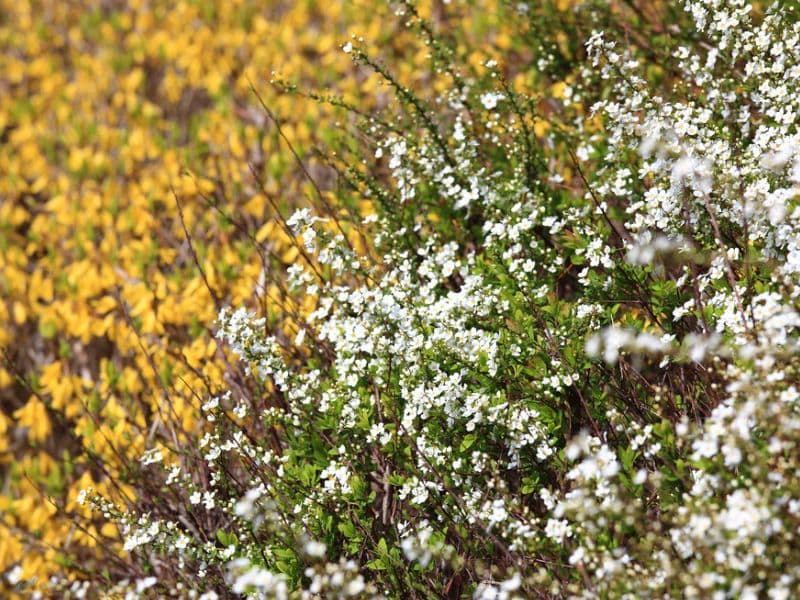
Spiraea thunbergii is grown as an ornamental plant in temperate regions. It is hardy and easy to grow in a sunny mixed border. In the UK it has gained the Royal Horticultural Society’s Award of Garden Merit.
This species forms an interspecific hybrid with Spiraea japonica L. fil.
In the horticultural trade one can obtain several varieties of Spiraea thunbergii, such as ‘Mt Fuji’ (white flowers), ‘Ogon’ (bright yellow-green leaves and white flowers), ‘Mellow yellow’ and ‘Fugino pink’.
II. How toGrow and Care
Sunlight
Baby’s breath spirea needs sufficient light. The more sunlight, the more lush its blossoms. It can put up with short periods of shade, but overly shady environments weakens the photosynthesis process and reduces growth, leading to fewer blossoms and smaller, thinner leaves. The leaves of the variegated variety can lose color and turn green. Space plants 60 to 80 cm apart from each other in order to avoid blocking each other’s sunlight as mature plants.
Temperature
Baby’s breath spirea originated in the temperate and subtropical mountains of the Northern hemisphere. It grows best in regions with distinct four seasons. It’s best grown in temperatures between 10 to 25 ℃ , but can survive as cold as -20 ℃. Besides its excellent cold resistance, it’s also drought- and humidity-tolerant.
Watering
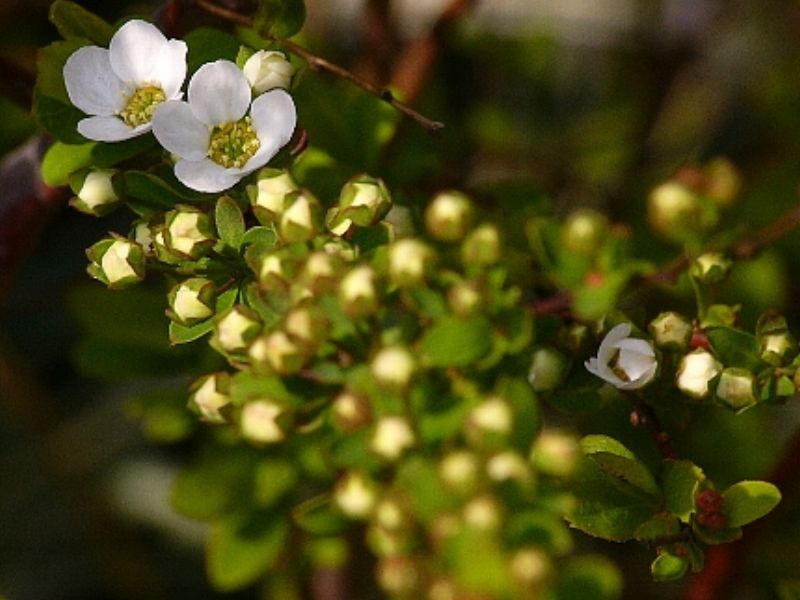
Originating from regions with moderate climates, baby’s breath spirea thrives in conditions that mimic its natural habitat, which includes well-drained soil and occasional moisture. It exhibits a preference for consistent but not excessive watering, aligning with its drought-resistant nature.
The ideal watering schedule for baby’s breath spirea is once every week to maintain the right moisture balance. Cultivated primarily outdoors, baby’s breath spirea benefits significantly from rainwater during its growing season, as it closely resembles the soft water supply of its native environment.
Soil
Baby’s breath spirea can grow in barren, saline-alkali soil. It doesn’t require anything specific from the soil, which means you can use all-purpose garden soil. It likes sandy soil that is loose, permeable, and rich in organic matter, but can also live in loamy clay soil. If your region gets a lot of rain, mix 3 parts garden soil and 1 part river sand or perlite to improve the soil’s permeability and water drainage. It grows best in soil with a pH value at 7, a.k.a. neutral soil.
Fertilizing
For optimal growth, baby’s breath spirea benefits from balanced nutrition fertilizers, which should be applied in early spring to kickstart growth, again after the initial flowering to encourage more blooms, and during fall to prepare for dormancy. These regular feedings enhance vigor and bloom quality.
The use of approximately one tablespoon of a slow-release granular fertilizer around the base is recommended, ensuring it doesn’t touch the stems or leaves to prevent burn. Adjustments to the feeding schedule may be needed based on the plant’s response and seasonal shifts. Always water thoroughly post-application to help soil absorption.
Pruning

Prune between the end of winter and early spring to trim overlapping, withered, or pest/disease-infested branches. If the baby’s breath spirea gets too large, doesn’t have enough growing space, or looks less attractive, prune it severely. Its ability to sprout new branches is relatively strong, and flowers only bloom on new branches. Therefore, there is no need to worry that hard pruning may negatively affect its growth or bloom.
After blooming, cut off the branches that flowered to avoid unnecessary nutrition consumption. This encourages new branches to sprout and prepare to flower. Cover incisions with callus anticorrosion film to encourage healing and prevent bacterial infection.
Propagation
Baby’s breath spirea is best propagated during autumn and winter using cutting and layering techniques. The process is moderately difficult, with successful propagation marked by new root and shoot growth. Adequate moisture and warmth are crucial throughout the propagation period.
Transplanting
For a successful transplant of baby’s breath spirea, mid-spring to mid-summer is best. These mild, sunny days create an ideal environment for root establishment. Choose a location with well-drained soil and partial-to-full sun exposure. Remember to keep the plant well-watered during its initial growth period!

Repotting
Repot baby’s breath spirea every 2-3 years in early spring before new growth begins. This bushy shrub thrives in a slightly larger pot to accommodate root expansion. Use a well-draining container to prevent root rot. Post-repotting, ensure the baby’s breath spirea has rich soil and maintains consistent moisture. Prune if necessary for shape and health, fostering an environment for its delicate white flowers to flourish.
III. Uses and Benefits
Baby’s breath spirea is a dense, lean flowering shrub notable for exquisitely rich spring blooms. White flowers appear in clusters that look like branches entirely covered in flowers. Because it is hardy, disease and pest resistant, and low maintenance, it works well as a part of flower borders and beds, and can serve as excellent cover for banks and slopes. Due to its wiry nature and bloom type, baby’s breath spirea looks best in cottage and informal-type gardens.
IV. Harvesting and Storage

Baby’s breath spirea’s branches, leaves, and flowers are all highly ornamental and often used in bouquets. After harvest, cut the base of the flowering twigs at a 45° angle with a pair of sharp gardening scissors to maximize the water absorption surface. Place the twigs into a vase filled with clean water quickly to avoid water loss. Cut flowers can last 7-10 days.
Find Where to Buy the Best Thunberg Spiraea (Spiraea thunbergii)

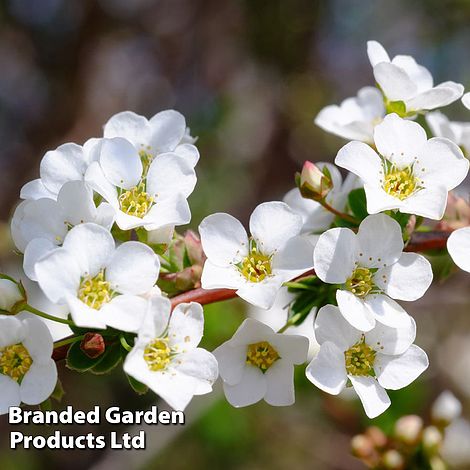


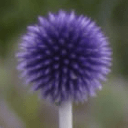
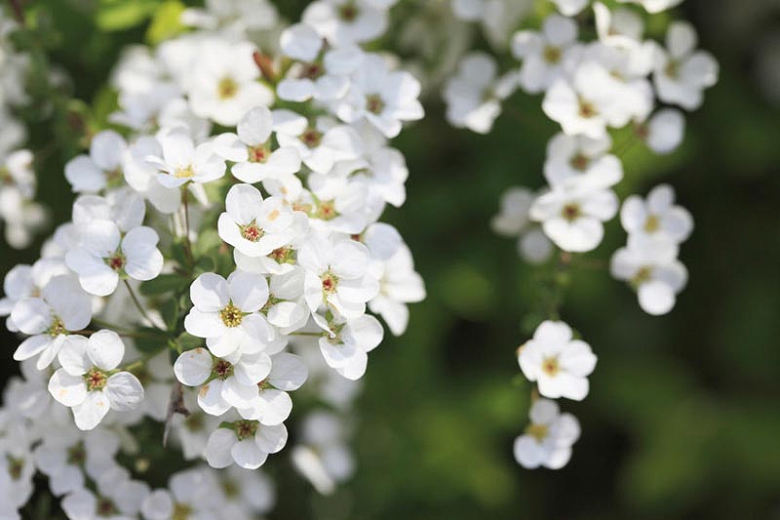

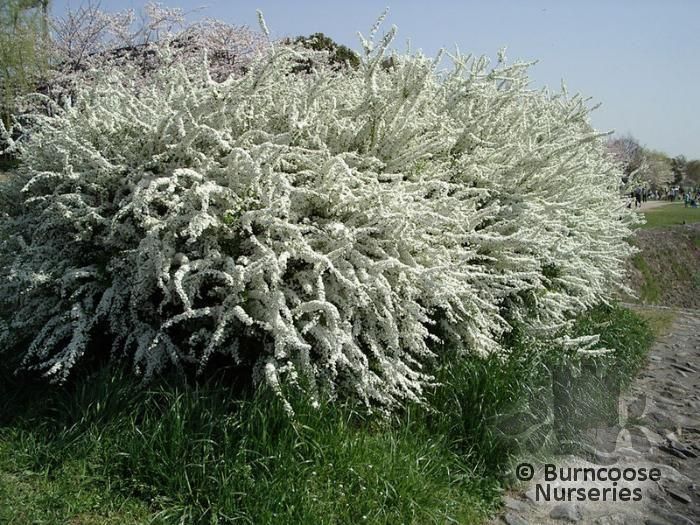


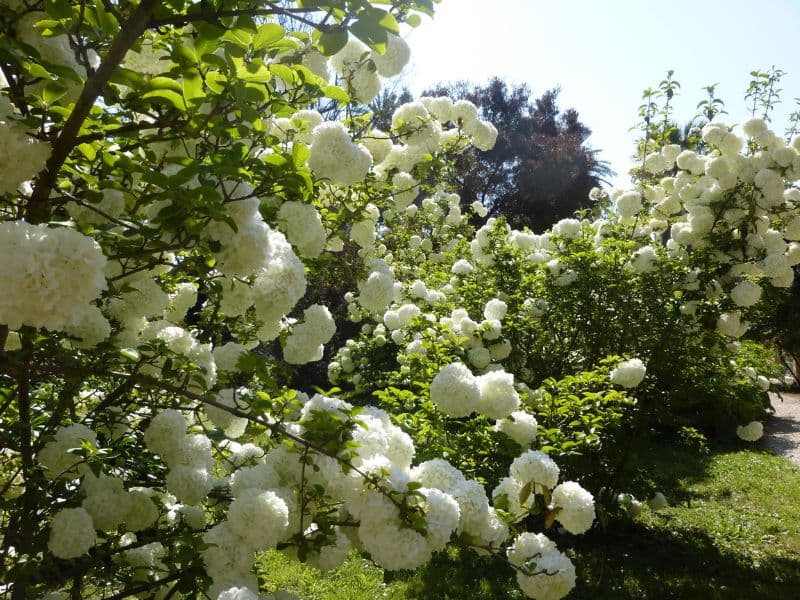
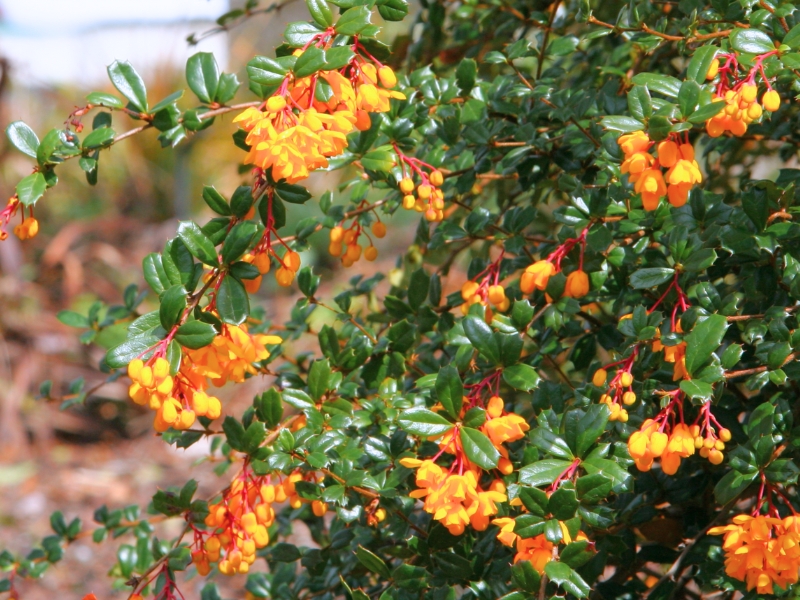
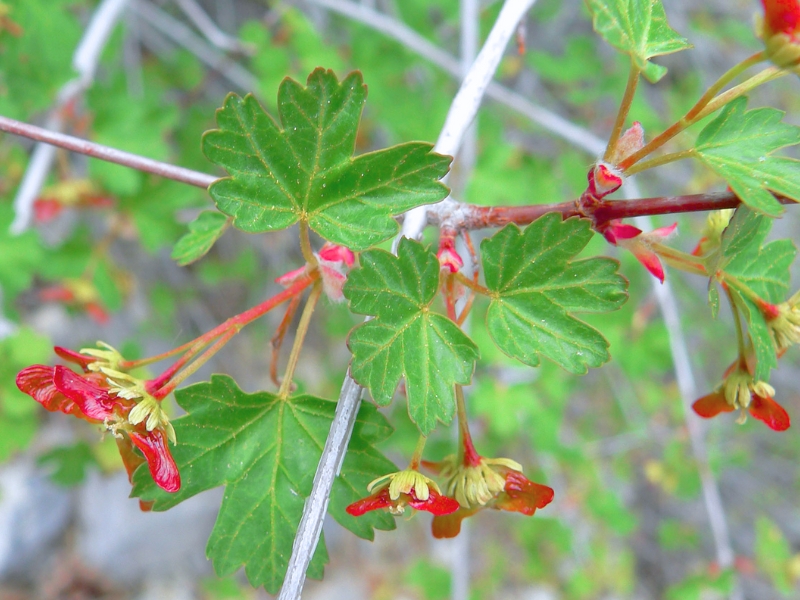
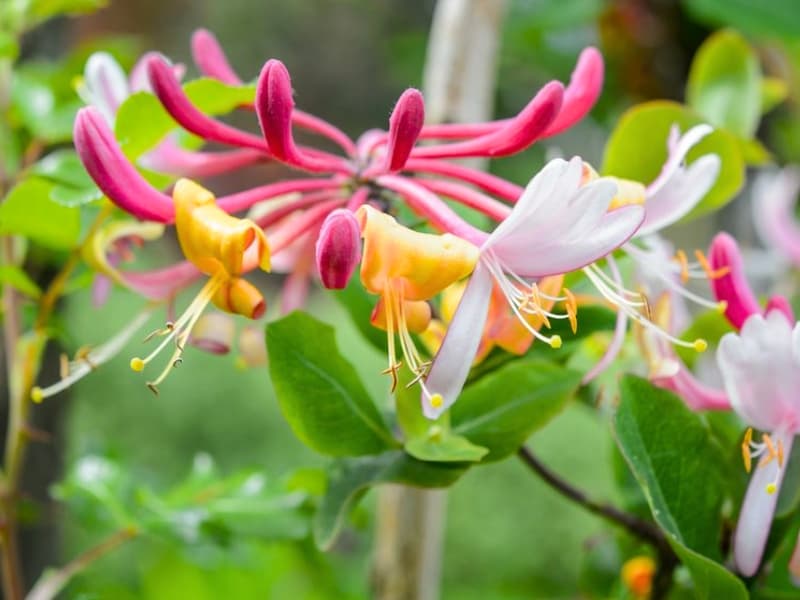
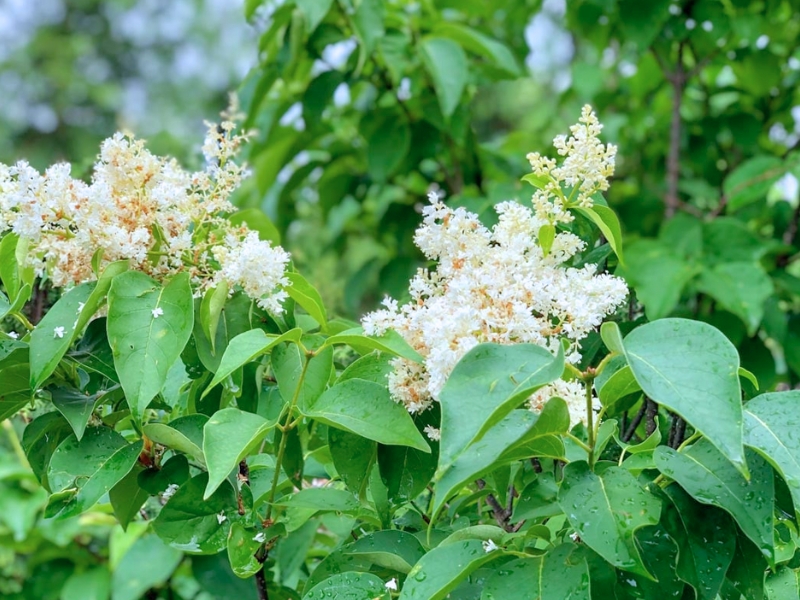
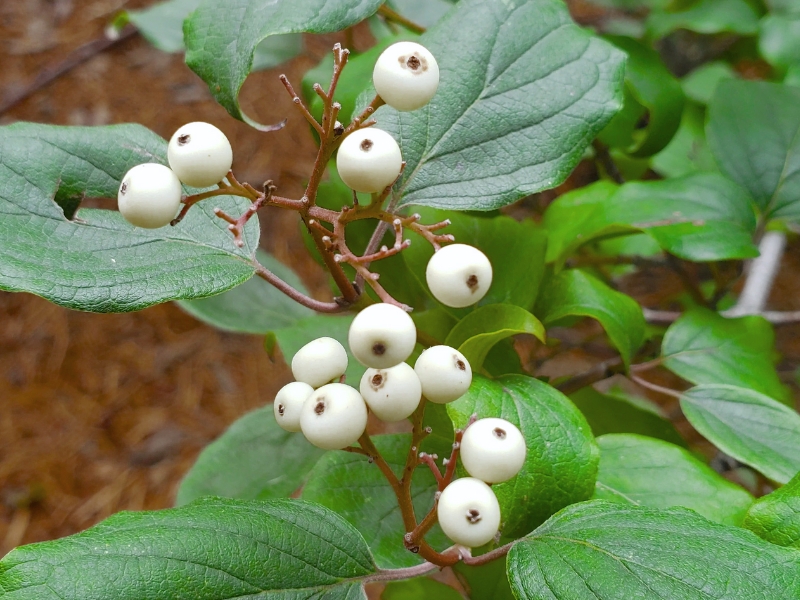

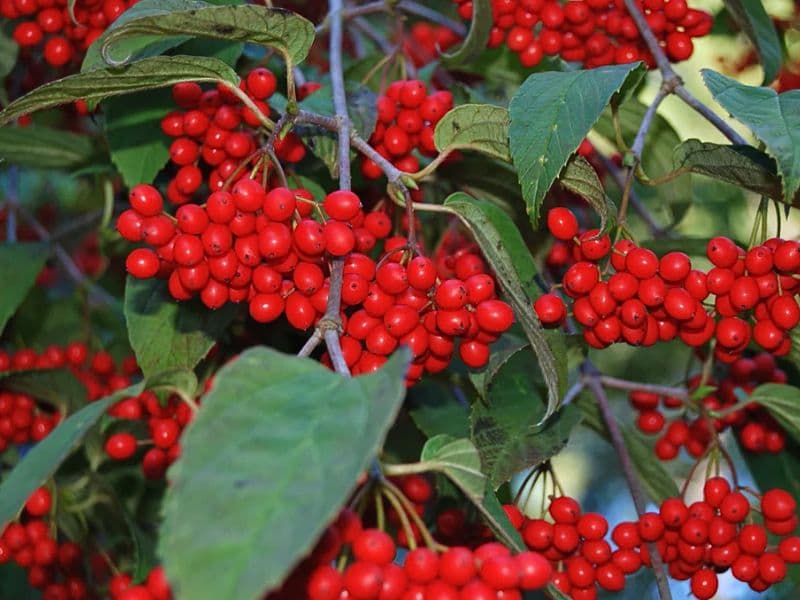
Leave a Reply